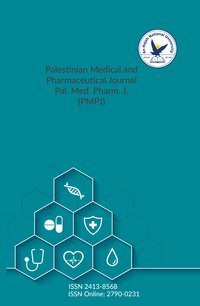Drug utilization evaluation of antibiotics in general surgery department: Categorization using World Health Organization Access, Watch, Reserve (AWaRe) classification
Authors:
Article info
2024-05-07
2024-08-12
2024-08-16
103 - 106
Keywords
- Reserve
- Watch
- Drug Utilization Evaluation
- Antibiotic
- Ceftriaxone
- Access
Abstract
Background: Antibiotic prophylaxis is critical in general surgery to prevent surgical site infections (SSIs). While essential for many surgical procedures, the judicious use of antibiotics prevents antimicrobial resistance and maintains patient care. Aim: The current study aims to evaluate the drug usage patterns of antibiotics in the general surgery department by using benchmarks and WHO AWaRe framework for antibiotics. Method: We conducted a drug utilization evaluation study on 384 patients visiting the department of general surgery. We evaluated the antibiotic prescribing using the World Health Organization- Access, Watch, and Reserve (AWaRe) classification system. Result: Ceftriaxone is the commonly prescribed antibiotic in our study (17.70%). Ceftriaxone is a Watch category antibiotic. The most common surgical procedure in our study was hernioplasty (16.40). The average number of antibiotics per prescription was 2.16 and had a compliance rate of 90.89% with the National List of Essential Medicines (NLEM). Conclusion: Cefazolin is recommended over ceftriaxone because it is an access class of antibiotic. Judicious use of second- and third- generation antibiotics and Watch class antibiotics such as ceftriaxone are necessary to prevent antimicrobial resistance.
Medapati, S., Mugada, V., Narava, S. S. S., Kucherlapati, S., Made, G., Raparthi, J. S., & Yarguntla, S. R. (2024). Drug utilization evaluation of antibiotics in general surgery department: Categorization using World Health Organization Access, Watch, Reserve (AWaRe) classification. Palestinian Medical and Pharmaceutical Journal, 10(2), 103–106. https://doi.org/10.59049/2790-0231.10.2.2280
[1]S. Medapati et al., “Drug utilization evaluation of antibiotics in general surgery department: Categorization using World Health Organization Access, Watch, Reserve (AWaRe) classification,” Palestinian Medical and Pharmaceutical Journal, vol. 10, no. 2, pp. 103–106, Aug. 2024, doi: 10.59049/2790-0231.10.2.2280.
Medapati, Saritha, et al. “Drug Utilization Evaluation of Antibiotics in General Surgery Department: Categorization Using World Health Organization Access, Watch, Reserve (AWaRe) Classification.” Palestinian Medical and Pharmaceutical Journal, vol. 10, no. 2, Aug. 2024, pp. 103–06. Crossref, https://doi.org/10.59049/2790-0231.10.2.2280.
1.Medapati S, Mugada V, Narava SSS, Kucherlapati S, Made G, Raparthi JS, et al. Drug utilization evaluation of antibiotics in general surgery department: Categorization using World Health Organization Access, Watch, Reserve (AWaRe) classification. Palestinian Medical and Pharmaceutical Journal [Internet]. 2024 Aug;10(2):103–6. Available from: http://dx.doi.org/10.59049/2790-0231.10.2.2280
Medapati, Saritha, Vinodkumar Mugada, Satya Sai Sri Narava, Sowmya Kucherlapati, Gayatri Made, Jyothi Swapna Raparthi, and Srinivasa Rao Yarguntla. “Drug Utilization Evaluation of Antibiotics in General Surgery Department: Categorization Using World Health Organization Access, Watch, Reserve (AWaRe) Classification.” Palestinian Medical and Pharmaceutical Journal 10, no. 2 (August 2024): 103–6. https://doi.org/10.59049/2790-0231.10.2.2280.
Drug utilization evaluation of antibiotics in general surgery department: Categorization using World Health Organization Access, Watch, Reserve (AWaRe) classification
المؤلفون:
معلومات المقال
2024-05-07
2024-08-12
2024-08-16
103 - 106
الكلمات الإفتتاحية
- Reserve
- Watch
- Drug Utilization Evaluation
- Antibiotic
- Ceftriaxone
- Access
الملخص
Background: Antibiotic prophylaxis is critical in general surgery to prevent surgical site infections (SSIs). While essential for many surgical procedures, the judicious use of antibiotics prevents antimicrobial resistance and maintains patient care. Aim: The current study aims to evaluate the drug usage patterns of antibiotics in the general surgery department by using benchmarks and WHO AWaRe framework for antibiotics. Method: We conducted a drug utilization evaluation study on 384 patients visiting the department of general surgery. We evaluated the antibiotic prescribing using the World Health Organization- Access, Watch, and Reserve (AWaRe) classification system. Result: Ceftriaxone is the commonly prescribed antibiotic in our study (17.70%). Ceftriaxone is a Watch category antibiotic. The most common surgical procedure in our study was hernioplasty (16.40). The average number of antibiotics per prescription was 2.16 and had a compliance rate of 90.89% with the National List of Essential Medicines (NLEM). Conclusion: Cefazolin is recommended over ceftriaxone because it is an access class of antibiotic. Judicious use of second- and third- generation antibiotics and Watch class antibiotics such as ceftriaxone are necessary to prevent antimicrobial resistance.
Medapati, S., Mugada, V., Narava, S. S. S., Kucherlapati, S., Made, G., Raparthi, J. S., & Yarguntla, S. R. (2024). Drug utilization evaluation of antibiotics in general surgery department: Categorization using World Health Organization Access, Watch, Reserve (AWaRe) classification. Palestinian Medical and Pharmaceutical Journal, 10(2), 103–106. https://doi.org/10.59049/2790-0231.10.2.2280
[1]S. Medapati et al., “Drug utilization evaluation of antibiotics in general surgery department: Categorization using World Health Organization Access, Watch, Reserve (AWaRe) classification,” Palestinian Medical and Pharmaceutical Journal, vol. 10, no. 2, pp. 103–106, Aug. 2024, doi: 10.59049/2790-0231.10.2.2280.
Medapati, Saritha, et al. “Drug Utilization Evaluation of Antibiotics in General Surgery Department: Categorization Using World Health Organization Access, Watch, Reserve (AWaRe) Classification.” Palestinian Medical and Pharmaceutical Journal, vol. 10, no. 2, Aug. 2024, pp. 103–06. Crossref, https://doi.org/10.59049/2790-0231.10.2.2280.
1.Medapati S, Mugada V, Narava SSS, Kucherlapati S, Made G, Raparthi JS, et al. Drug utilization evaluation of antibiotics in general surgery department: Categorization using World Health Organization Access, Watch, Reserve (AWaRe) classification. Palestinian Medical and Pharmaceutical Journal [Internet]. 2024 Aug;10(2):103–6. Available from: http://dx.doi.org/10.59049/2790-0231.10.2.2280
Medapati, Saritha, Vinodkumar Mugada, Satya Sai Sri Narava, Sowmya Kucherlapati, Gayatri Made, Jyothi Swapna Raparthi, and Srinivasa Rao Yarguntla. “Drug Utilization Evaluation of Antibiotics in General Surgery Department: Categorization Using World Health Organization Access, Watch, Reserve (AWaRe) Classification.” Palestinian Medical and Pharmaceutical Journal 10, no. 2 (August 2024): 103–6. https://doi.org/10.59049/2790-0231.10.2.2280.

Since 2022
Cite Score (Scopus): 0.8
Time to First Decision: 3 Days
Submission to Acceptance: 45 Days
Acceptance to Publication: 64 Days
Acceptance Rate: 17%
Why should you
Publish With Us?
An-Najah National University
Nablus, Palestine
Nablus, Palestine
- P.O. Box
- 7, 707
- Fax
- (970)(9)2345982
- Tel.
- (970)(9)2345560
- (970)(9)2345113/5/6/7-Ext. 2628
- [email protected]
- EIC
- Prof. Waleed Sweileh
The Palestinian Medical and Pharmaceutical Journal (Pal. Med. Pharm. J.) © 2024 by An-Najah University, Nablus, Palestine is licensed under CC BY-NC 4.0
News and Views
